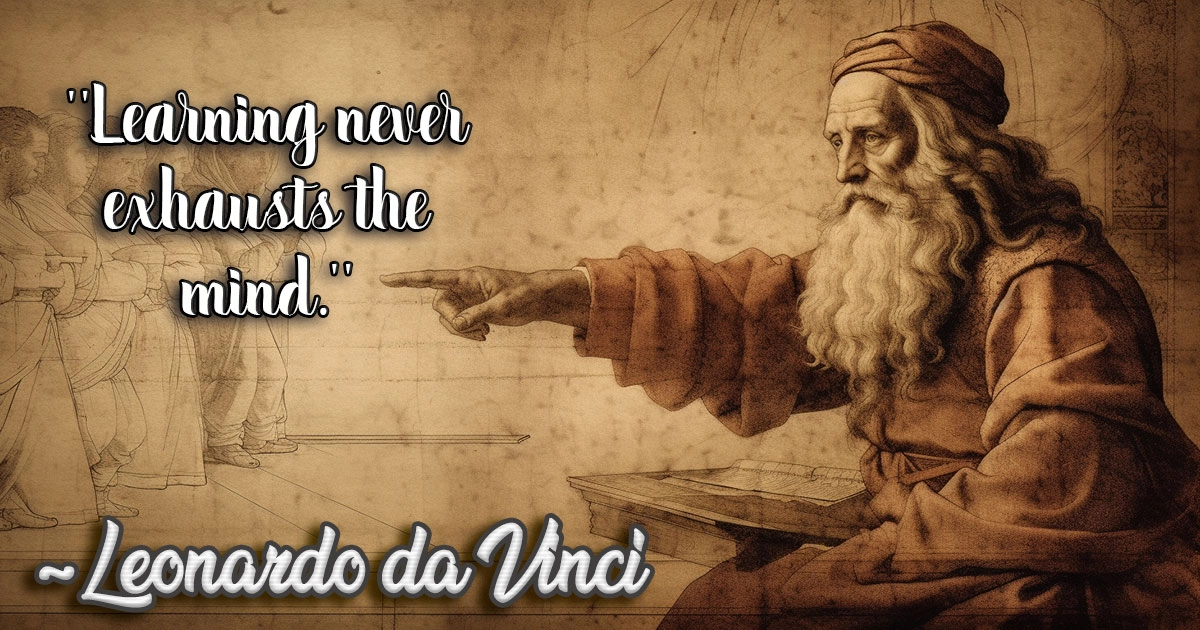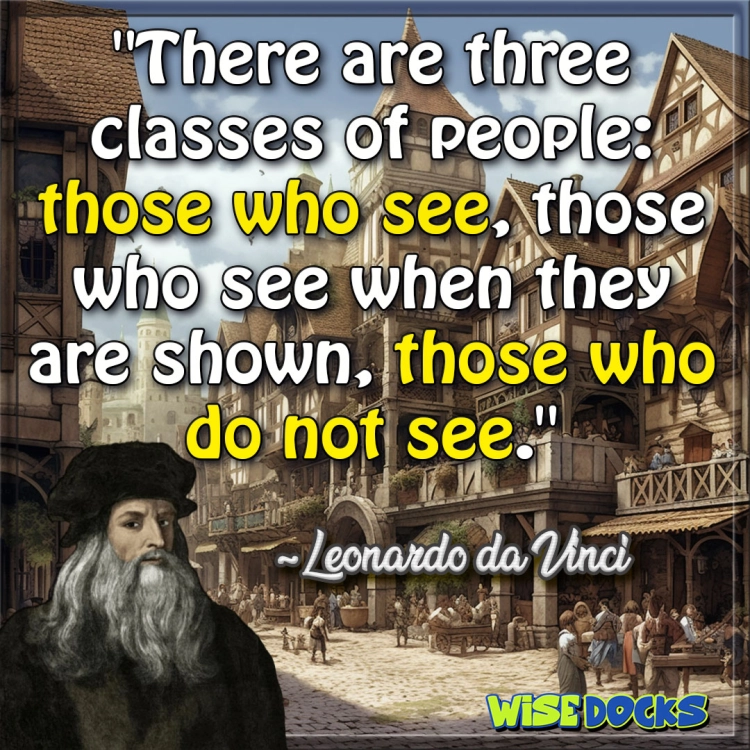Leonardo da Vinci: The Renaissance Man

Leonardo da Vinci
In the rolling hills of Tuscany, near the town of Vinci, a small village in Italy, one of history's most remarkable minds was born on April 15, 1452. Leonardo da Vinci would grow to embody the essence of the Renaissance, an era of rebirth in art, science, and human inquiry. His life was a testament to boundless curiosity, unparalleled talent, and an insatiable desire to understand the world around him.

Early Life and Education
Leonardo was born out of wedlock to a notary, Ser Piero, and a peasant woman, Caterina. Though born into an unconventional family structure, Leonardo's childhood in Vinci was one of exploration and freedom. Surrounded by the beauty of the Tuscan landscape, young Leonardo developed a profound connection with nature. He observed the flight of birds, the flow of water, and the anatomy of animals with a curiosity that foreshadowed his future achievements.
At the age of 14, Leonardo moved to Florence, where his father apprenticed him to the renowned artist Andrea del Verrocchio. In Verrocchio's workshop, Leonardo was introduced to various artistic techniques and mechanical skills. He learned to paint, sculpt, and work with metals. His genius quickly became apparent when, as legend has it, Verrocchio asked him to paint an angel in a piece titled "The Baptism of Christ." Leonardo’s angel was so exquisite that it overshadowed the work of his master, prompting Verrocchio to abandon painting altogether.

The Polymath Emerges
Florence in the late 15th century was a hub of cultural and intellectual activity. The city’s vibrant atmosphere provided the perfect environment for Leonardo to expand his interests beyond art. He immersed himself in the study of anatomy, engineering, mathematics, and philosophy. His notebooks from this period are filled with sketches, scientific diagrams, and writings that reveal a mind constantly at work, questioning and probing the mysteries of the world.
Leonardo's approach to learning was unique. He sought knowledge through observation and experimentation rather than relying solely on established authorities. This empirical method was revolutionary for the time and placed him at the forefront of the Renaissance movement. He dissected human corpses to understand the intricacies of the body, leading to some of the most detailed anatomical drawings ever created. These studies were not merely academic; they informed his art, enabling him to capture the human form with unprecedented accuracy.
The Artist
While Leonardo was a master of many disciplines, it was his art that first brought him widespread acclaim. His paintings are characterized by their realism, emotional depth, and innovative techniques. One of his most famous works, "The Last Supper," painted between 1495 and 1498, captures the moment Jesus announces that one of his disciples will betray him. The composition, use of perspective, and the portrayal of the apostles' varied reactions showcase Leonardo's genius.
Another masterpiece, the "Mona Lisa," is perhaps the most famous painting in the world. The portrait’s enigmatic expression has fascinated viewers for centuries, with debates still raging over the identity of the subject and the meaning behind her smile. Leonardo's mastery of sfumato, a technique of blending colors and tones, gives the painting its lifelike quality and contributes to its enduring mystery.
Leonardo's artistic output, though not as prolific as some of his contemporaries, is marked by a perfectionism that often left projects unfinished. He would frequently abandon works in pursuit of new ideas or in search of techniques that could better capture his vision. This relentless pursuit of perfection is both a testament to his genius and a reflection of the challenges he faced in bringing his ideas to fruition.
The Scientist and Inventor
Leonardo’s intellectual curiosity extended far beyond the canvas. His notebooks, which contain thousands of pages of sketches and writings, reveal his scientific mind. He explored topics ranging from anatomy to hydraulics, from flight to optics. In many cases, his ideas were far ahead of his time.
One of Leonardo’s most famous concepts was the idea of a flying machine. Inspired by his observations of birds, he designed several prototypes, including the ornithopter, which featured wings that flapped like a bird's. Although he never built a working model, his studies laid the groundwork for future innovations in aviation.
Leonardo’s contributions to engineering are equally impressive. He devised plans for a variety of machines, such as a self-propelled cart, which can be seen as an early precursor to the automobile, and a design for a diving suit that foreshadowed modern scuba gear. His understanding of mechanics and hydraulics was exceptional, and he proposed ideas that would not be realized until centuries later.
In anatomy, Leonardo's dissections led to groundbreaking discoveries. He accurately described the human spine, heart, and other organs, correcting many misconceptions held by his contemporaries. His detailed drawings of the human fetus, muscles, and skeleton remain some of the most accurate anatomical illustrations ever made.
Leonardo also studied botany, geology, and astronomy. He was particularly interested in the movement of water, which he observed and sketched extensively. His studies of water currents, eddies, and waves demonstrate his deep understanding of natural forces, and his ideas influenced the development of hydraulic engineering.
The Philosopher
Beyond his scientific and artistic achievements, Leonardo was a philosopher in the truest sense. He pondered the nature of existence, the relationship between humanity and the universe, and the interconnectedness of all things. His writings reflect a belief in the unity of knowledge, where art, science, and philosophy are not separate disciplines but interconnected paths to understanding the world.
Leonardo's notebooks are filled with aphorisms and reflections that reveal his thoughts on life, morality, and the pursuit of knowledge. He believed that curiosity was the key to wisdom and that the pursuit of understanding was a noble endeavor. His insatiable curiosity drove him to explore every aspect of life, and he encouraged others to do the same.
Later Life and Legacy
In 1516, Leonardo accepted an invitation from King Francis I of France to live and work at the Château du Clos Lucé, near the royal palace of Amboise. Although his health was declining, Leonardo continued to work on various projects and remained intellectually active until his death on May 2, 1519.
Leonardo da Vinci's influence is immeasurable. He is often regarded as the quintessential "Renaissance Man," a term that describes someone with a wide range of talents and knowledge. His contributions to art, science, and engineering have left a lasting legacy that continues to inspire generations.
His approach to learning, characterized by observation, experimentation, and an interdisciplinary mindset, was revolutionary. He showed that art and science are not mutually exclusive but can complement and enhance each other. His work laid the groundwork for many modern disciplines, from anatomy to aeronautics, and his artistic techniques continue to be studied and admired.
Leonardo’s notebooks, filled with sketches, scientific diagrams, and philosophical musings, are considered some of the most important documents in the history of science and art. They provide a window into the mind of a genius who was centuries ahead of his time.
Leonardo Pushed the Boundaries
Leonardo da Vinci’s life was a journey of discovery, driven by an insatiable curiosity and a desire to understand the world. He pushed the boundaries of what was known in his time, leaving behind a legacy that transcends disciplines and continues to inspire today. Whether as an artist, scientist, or philosopher, Leonardo exemplified the Renaissance spirit, reminding us of the limitless potential of human creativity and intellect. His life’s work stands as a testament to the power of imagination, the pursuit of knowledge, and the enduring quest to unlock the mysteries of the universe.